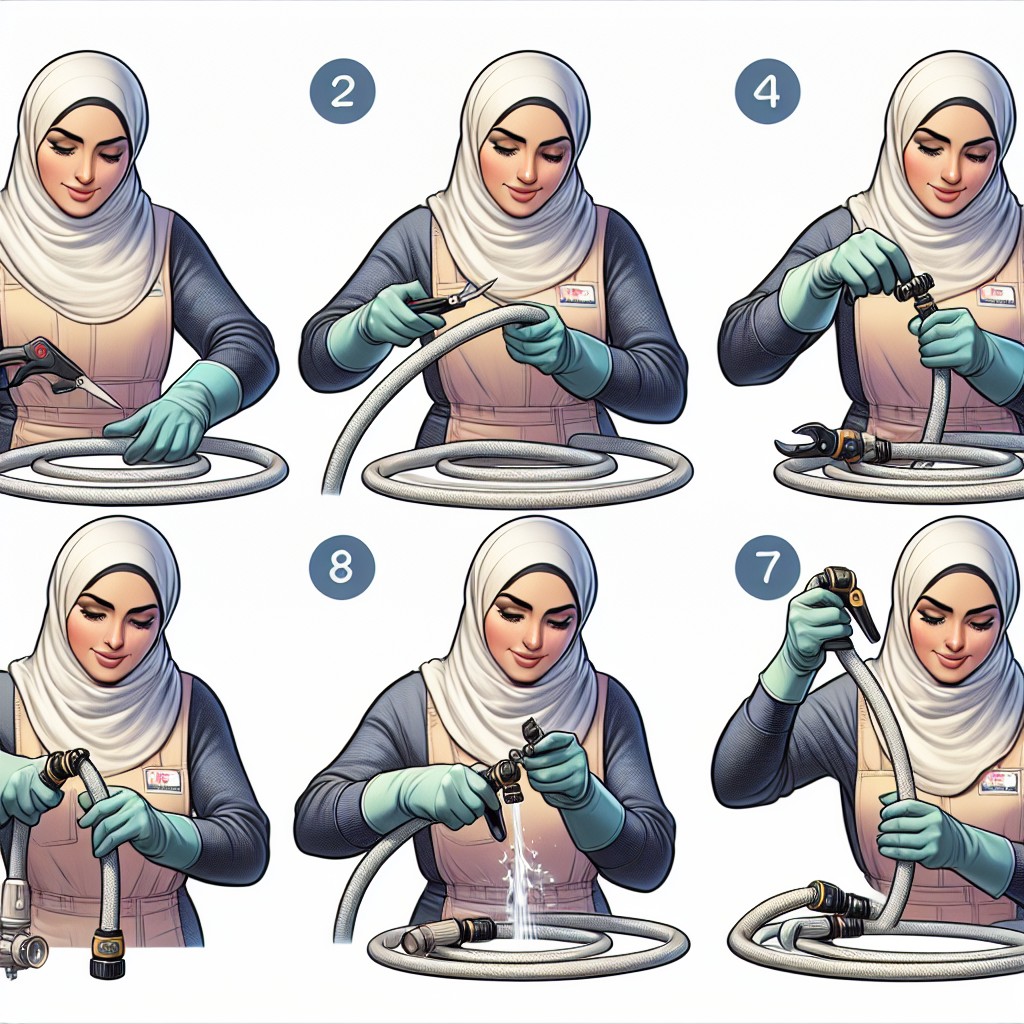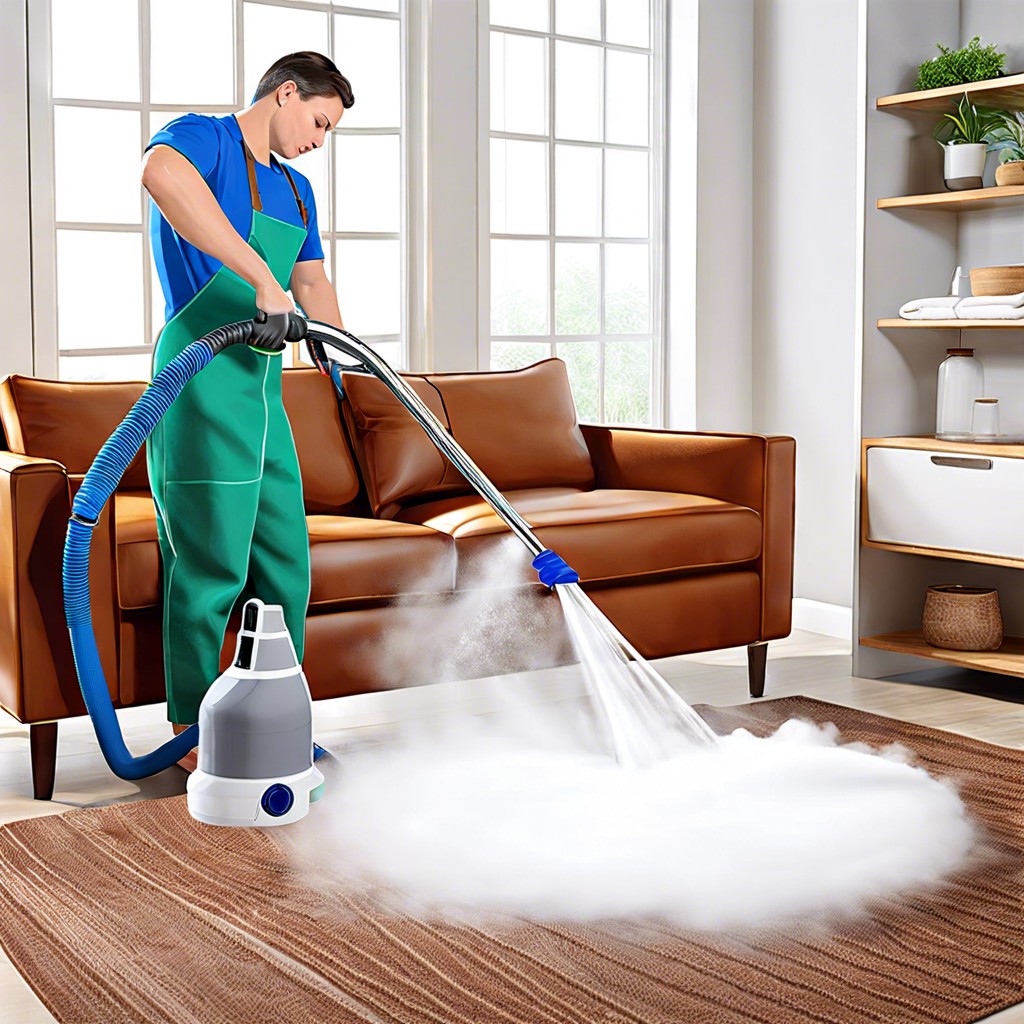Last updated on
Explore the indispensable benefits of a hose repair kit because it could be the unsung hero in prolonging the life of your garden hoses.
Key takeaways:
- Hose repair kits come in various types for different hose damage.
- Components of a hose repair kit include clamps, couplings, and splicers.
- Follow a step-by-step guide to effectively use a hose repair kit.
- Having the right tools, such as scissors and clamps, is crucial for hose repair.
- Consider factors like hose diameter and material compatibility when choosing a kit.
Table of Contents
Types of Hose Repair Kits

Hose repair kits come in various shapes and sizes, tailored to address different types of damage and hose specifications. For garden hoses, kits typically include a hose end connector, clamps, and sometimes a coupling device to join two hose segments.
In contrast, hydraulic hose kits are designed with more robust fittings and sealants that can withstand higher pressures, making them suitable for heavy machinery. Automotive hose kits cater to the specific materials and connectors used in car cooling and fuel systems.
Additionally, expandable hose repair kits provide specialized patches and connectors for the unique fabric and latex materials these hoses are made from. It’s crucial to select a kit that matches the material, diameter, and pressure requirements of the hose you intend to repair.
Components of a Hose Repair Kit

A typical hose repair kit may come with a selection of clamps, couplings or connectors, and a splicer or mender. These components are designed to fit together snugly, bridging any gap or sealing any break in your hose.
– Clamps are used to secure the hose to the repair fittings, ensuring a tight seal to prevent leaks. They often require a screwdriver or a wrench for tightening.
– Couplings or connectors serve as the joining parts between two hose ends. Depending on the kit, they could be male or female connectors, or a universal design to fit any gender.
– A splicer or mender is a straight piece that fits inside the hose ends to join them together. For a smooth repair process, ensure the inner diameter of the splicer matches the inner diameter of your hose.
Some kits may also include rubber tape or hose repair tape for an additional sealing layer, especially for minor surface damage. Additionally, a set of detailed instructions often comes with the kit to guide users through the repair process.
Step-by-Step Guide to Using a Hose Repair Kit

Begin by examining the damaged hose to determine the extent of the repair needed. If you encounter a small leak or puncture, a simple patch may suffice, whereas a larger tear may require cutting and installing new connectors.
1. Locate the damage: Identify the area of the hose that needs repair. Clean the area around the damage to ensure a secure fit for the repair components.
2. Cut out damage: Use a sharp utility knife or hose cutter to remove the damaged section cleanly if necessary.
3. Select fittings: Choose the appropriate fittings from your repair kit that match the diameter of your hose.
4. Install clamps: Slide the provided clamps onto each end of the hose if they are not already attached to the fittings.
5. Attach fittings: Firmly push the fittings into each end of the cut hose. Ensure they are seated all the way into the hose.
6. Secure clamps: Tighten the clamps around the hose and fittings to secure them in place. For screw-type clamps, use a screwdriver to tighten until snug. For crimp-style clamps, a crimping tool is required to secure the fitting.
7. Test the repair: Turn on the water to check for leaks. Make sure the repair holds under pressure before resuming regular use.
Essential Hose Repair Tools

To effectively repair a hose, having the right tools on hand streamlines the process. Firstly, a pair of sharp scissors or a utility knife is crucial for trimming damaged hose sections with precision. A hose cutter can also serve this purpose and often gives a cleaner cut.
Secondly, hose clamps or crimping tools are necessary to secure the repair couplings in place, ensuring a tight seal. Screwdrivers or wrenches may be needed to tighten these clamps, depending on the type of repair fittings used.
Lastly, for an optimal fix, consider including sealant tape or rubber cement in your toolkit; these can help to reinforce the seal and prevent future leaks at the repair site. With these essential tools, you can tackle most hose repairs with confidence.
Can a High-Pressure Hose Be Repaired?
High-pressure hoses, such as those used in industrial machinery or pressure washers, are built to withstand intense forces, but they are not impervious to damage. Repairs are possible but come with certain considerations:
- Damage Assessment: It’s crucial to evaluate the extent of the damage. Small punctures or cuts can be repaired successfully, while compromised hose integrity often necessitates replacement.
- Repair Kit Suitability: Ensure the repair kit is appropriate for high-pressure applications. The connectors, clamps, and hose material must be rated for the hose’s operating pressure.
- Professional Repairs: For safety and reliability, professional repair services are recommended for high-pressure hoses. Incorrect repairs can lead to hose failure and potential injury.
- Safe Operation: After any repair, a pressure test should be conducted to confirm the hose can operate safely at its designated pressure.
Understanding the risks and requirements of repairing high-pressure hoses ensures the longevity and safety of the equipment.
Finding a Hose Repair Kit Near You
Identifying a local source for a hose repair kit streamlines the maintenance process, ensuring tools and supplies are within easy reach when needed.
Begin your search at hardware stores and home improvement centers, which typically stock a variety of kits.
For specialized needs, consider visiting an auto parts retailer or a garden center, depending on whether you’re dealing with an automotive hose or a garden hose.
A quick online search can also direct you to nearby suppliers.
With today’s digital shopping options, you may prefer browsing e-commerce platforms for convenience, often offering a broader selection and user reviews to help in the decision-making process.
If time is not pressing, consider reaching out to the manufacturer directly for advice on purchasing their products locally.
Remember to check for the availability of professional-grade kits if you’re tackling a demanding repair job.
How to Choose the Right Hose Repair Kit
Selecting the appropriate hose repair kit hinges on various factors:
1. Hose Diameter: Ensure the kit matches the diameter of your hose for a secure fit.
2. Material Compatibility: Check if the kit is suitable for your hose material – whether it’s rubber, vinyl, or a composite.
3. Type of Damage: Some kits are designed for simple leaks, while others are more suited for significant breaks or damaged fittings.
4. Pressure Ratings: If dealing with a high-pressure hose, pick a kit rated for the hose’s PSI to withstand the force without failing.
5. Quality of Components: Look for corrosion-resistant materials and durable clamps that ensure a long-lasting repair.
6. Ease of Use: Consider kits with clear instructions and no need for additional tools, which can make the repair process more streamlined.
7. Brand Reputation: Research the brand’s market standing, seeking out reviews to gauge the reliability and effectiveness of their kits.
8. Price Point: Weigh the cost against the expected longevity and quality of the repair – cheaper is not always better.
9. Availability: Opt for readily available repair kits to swiftly address hose damage and minimize downtime.
Benefits of Rekoil Hose End Replacements
Rekoil hose end replacements come with the promise of revitalizing your garden or workshop hoses, presenting a cost-effective alternative to complete hose replacement. These ends provide a secure and leak-proof connection, ensuring no water is wasted – a win for both the environment and your wallet.
Thanks to their universal design, they readily attach to various hose sizes, making them versatile for any repair.
Durability is another key advantage. Made from high-quality materials, they’re crafted to withstand the elements and the wear-and-tear of frequent use. This resilience translates to a longer lifespan for your hoses, allowing you to get the most use out of your existing equipment.
Ease of installation is a standout feature, eliminating the need for professional assistance. With simple, straightforward instructions, the average homeowner can quickly fix a damaged hose, saving both time and labor costs. They’re an excellent addition to any DIY repair kit, ensuring you’re prepared for quick fixes around the home.
Warranty Information for Hose Repair Kits
When considering the purchase of a hose repair kit, it’s important to look into warranty options for added peace of mind. Manufacturers may offer different types of warranties, ranging from limited to lifetime guarantees, which can significantly influence buyer satisfaction and product reliability.
Limited Warranty: Typically covers replacement of defective parts within a specified period from the purchase date. Check the duration and what specifically is covered.
Full Warranty: Promises to fix or replace defective kits at no charge during the warranty period. However, conditions may apply.
Lifetime Warranty: Ensures that at any point, should the kit fail due to manufacturing defects, it will be repaired or replaced.
It’s also essential to keep in mind that warranties might not cover issues stemming from normal wear and tear, improper use, or accidental damage. Always read the fine print to familiarize yourself with the terms and requirements, such as registering the product or retaining the receipt, to validate the warranty. Contact customer service if in doubt – they can provide clarity on coverage specifics and process claims if necessary.
Finding a Distributor for Hose Repair Kits
Locating a distributor for hose repair kits is a straightforward process. Start by visiting the websites of leading manufacturers where they often have a “Where to Buy” or “Distributor Locator” tool. This feature typically allows you to input your zip code or region to find authorized sellers near you.
Alternatively, home improvement stores and hardware shops are common places to find a variety of repair kits. For specialized needs, industrial supply companies may carry a wider range of products.
Online marketplaces like Amazon or eBay offer a plethora of options with the added convenience of reading customer reviews. Don’t overlook local garden centers or automotive parts stores, which may stock hose repair kits suitable for general use.
If you’re looking for bulk purchases or specific brands, reaching out to the manufacturer directly can often lead to wholesale distributors that cater to larger orders.




